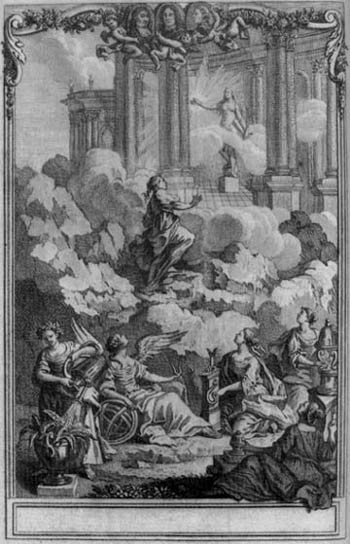
But censure is perhaps inevitable; for some are so ignorant, that they grow sullen and silent, and are chilled with horror at the sight of any thing, that bears the semblance of learning, in whatever shape it may appear; and should the spectre appear in the shape of woman, the pangs, which they suffer, are truly dismal.
Elizabeth Fulhame, An Essay on Combustion, with a View to
a New Art of Dying and Painting, 1794
‘If I have seen further it is by standing on ye shoulders of giants,’ declared Isaac Newton. Boasting through false modesty, and keen to be acknowledged as the world’s leading natural philosopher, Newton borrowed a familiar biblical image. Did he ever dream that this neat disclaimer would become one of science’s most famous quotations, a favourite slogan for scientists celebrating their triumphant march up the mountain of truth? Newton is now, of course, regarded as one of the three great giants of his own age, partnered by his French predecessor René Descartes and his German contemporary, Gottfried Leibniz.1
Figure 12 shows the frontispiece of a physics text that tackled a hard task – explaining the ideas of Newton and Leibniz to French students. Published to great acclaim in 1740, this scholarly book was written by Émilie du Châtelet, a woman whose life has been overshadowed by the greatest giant of Enlightenment history, her lover Voltaire. In the centre, climbing up towards the Temple of Reason, is a solitary female figure, probably du Châtelet herself. Echoing Newton, she wrote: ‘We bring ourselves up to the knowledge of truth like those Giants who scaled the Heavens by climbing on one another’s shoulders.’2

Fig. 12 The Temple of Reason. Frontispiece of Émilie du Châtelet, Institutions de Physique (Paris, 1740).
At the bottom of the picture sits winged Astronomy, resting her arm on a celestial model and holding her measuring dividers in the other hand. She is accompanied by Agriculture watering a plant, and by other scientific muses gazing up at the radiant, naked figure of Truth, whose powerful beams of light pierce through the dark clouds of ignorance. These women are allegorical figures who only symbolise the power of knowledge. Just as Minerva represented wisdom, other classical goddesses personified nature and the sciences. Astronomy, chemistry, music, mathematics: all the disciplines were traditionally represented by female figures carrying the tools of their trade – dividers, balances, harps, and so on.
Du Châtelet’s muses inhabit a fantasy world that is glimpsed through a solid rococo frame of reality. Here the ornate surround is surmounted by the portraits of three men – Descartes, Leibniz and Newton. In contrast with their clearly defined features, the ambiguous woman approaching the Temple of Reason does not reveal du Châtelet’s identity, and her name does not appear on the title page. Female goddesses stood for scientific rationality, but in the real world, it was men who achieved it. Descartes, Leibniz, Newton: a powerful trio of men who look down from their superior position and who also loom over science’s history, casting long shadows which conceal their contemporaries. Posterity has elevated them to fame, yet ignored the achievements of many, many others. In particular, the reputation of each of these three heroes was boosted by a woman.
Early modern Europe lacked telephones, aeroplanes and computers, but nevertheless there was an efficient communication network linking scholars and societies together. People wrote to each other, visited each other’s homes, and discussed the latest theories, pictures and books. Descartes, Leibniz and Newton lived at different times (but overlapping) in different countries, yet they had many colleagues in common, either through letters or face-to-face meetings. They belonged to an intellectual elite which formed only a narrow band of society, yet stretched internationally. Many of these friendly circles were either exclusively male or exclusively female, but they did of course interact. Descartes, Leibniz and Newton all knew women, even though many biographies are written as though they lived in a world composed entirely of one sex – men.
The foundations of modern science were not built by male geniuses labouring in isolation. One way of thinking about it is to imagine each of these three men lying at the centre of a circle of contacts. Like intersecting ripples on the surface of a pond, their lives interlocked with each other because they had many acquaintances in common. But who is important depends on whose viewpoint you adopt – and each and every one of these acquaintances regarded themselves as sitting at the hub of their own circle. Historians choose which centre to prioritise, which network of contacts to emphasise, which interconnections are too remote to be significant. By concentrating on different links, they can present a different version of the past.